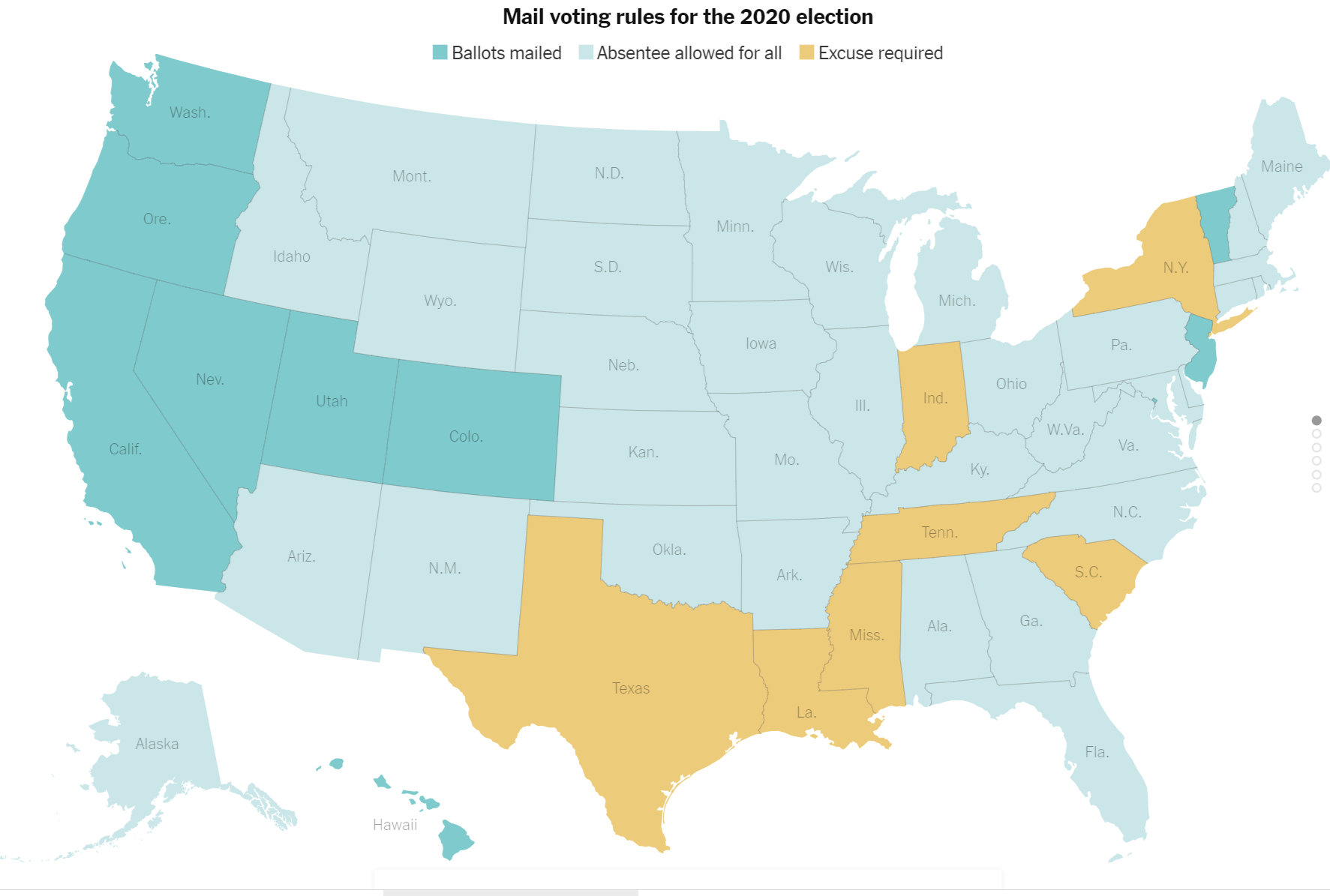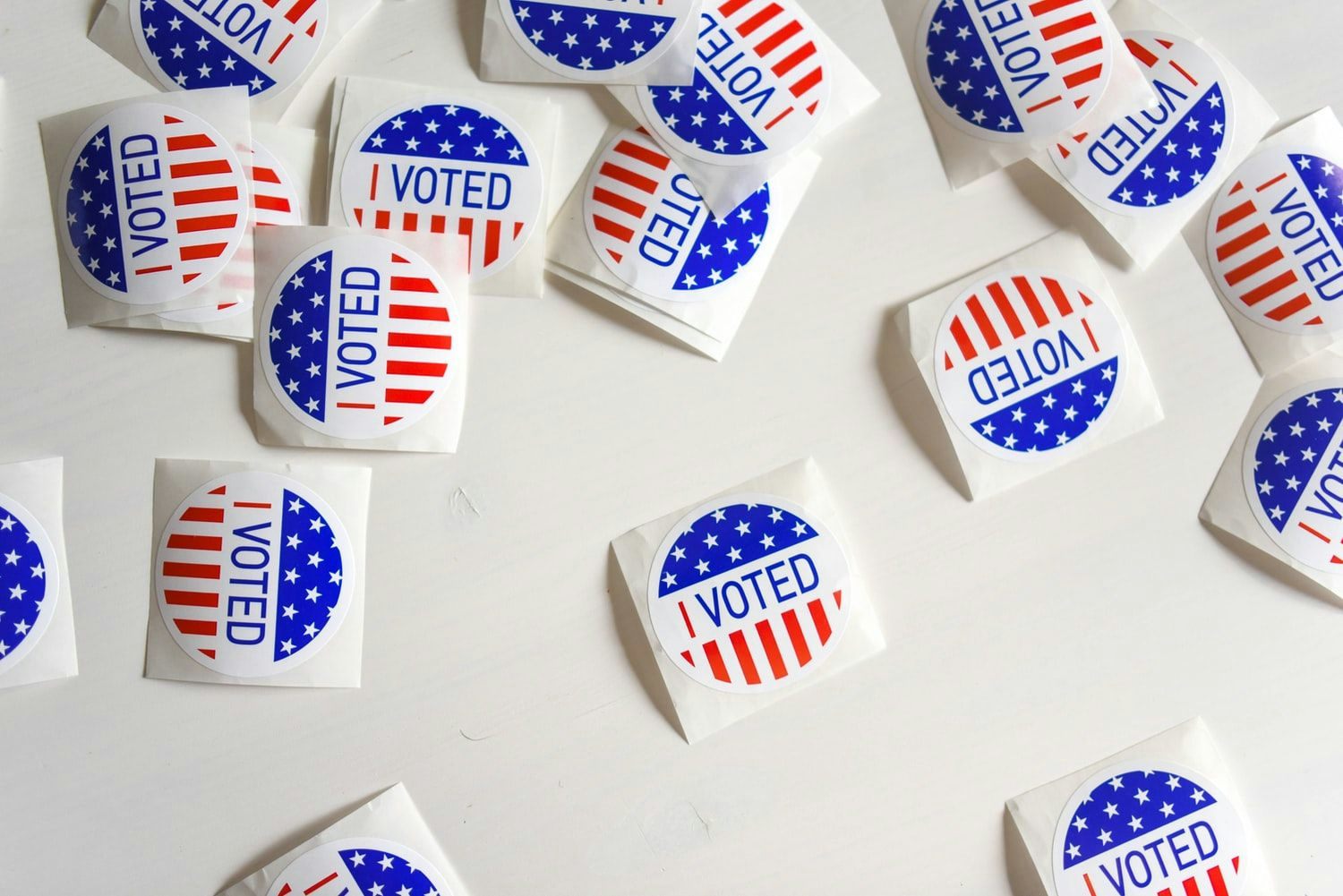Voting looks different this year. As millions of Americans prepare to vote in the midst of the coronavirus pandemic, we want to help clear up questions about voting. So in this post, we are breaking down all the most common questions about the voting process. Let’s dive in.
1. Can I vote by mail in my state?
Because of concerns about the coronavirus, many more people are interested in voting by mail this year than in prior elections. Mail-in or absentee voting is allowed in every state, but a handful of states require an excuse to receive a mail in ballot (see the map below). During the coronavirus pandemic, many states have loosened restrictions on mail in voting. As of August 21, 9 states and Washington, D.C are sending ballots to every voter, 34 states are allowing voters to request an absentee or mail in ballot without an excuse and seven states are requiring voters to have an excuse to request a mail-in ballot. You can find the latest info on Ballotpedia.

2. Which is more secure, mail in or in person voting?
Although the Trump administration has criticized mail in voting as being less secure, in truth mail in voting is just as carefully monitored as in person voting. Signatures on ballots are meticulously checked, and ballots are tracked by elections officials to make sure that double voting does not occur. There is no higher risk of voter fraud through mail in voting. In general, voter fraud of any kind is extremely uncommon in the U.S.
3. What is the difference between mail in and absentee voting?
Mail in and absentee voting are essentially the same thing. Originally, voting by mail was only available to those people who could not physically vote at a polling place due to being abroad or on jury duty, hence the term “absentee”. But as voting by mail has increased around the U.S., many states have chosen to use the term “mail in” since it does not imply that you have to be out of your district or unable to vote in person to request a mail in ballot. But both terms refer to ballots that are mailed or placed in a ballot box, rather than filled out at a polling place.
4. Can I request mail in ballot now? If so, how?
Yes, you can request mail in ballot for the 2020 election. Some states are mailing ballots automatically to all voters, so you won’t need to request one. So far, those states are Vermont, California, Washington, Oregon, Utah, Nevada, New Jersey, Colorado and Washington, D.C. In 34 others, you can request a mail in ballot without providing any excuse for why you cannot vote in person. In 7 you will need to provide an excuse. As of August 21, the states requiring an excuse to vote absentee or by mail are: Texas, Louisiana, Indiana, Mississippi, Tennessee, South Carolina, and New York. Of those, only New York accepts fear of COVID-19 as an excuse.
Check your local board of elections or state voting website for instructions on how to request a mail in ballot in your state. It is possible you can request your mail in ballot online, but you may need to do it over the phone or mail.
5. How does mail in voting actually work?
If you are registered to vote by mail, you will likely receive a voting guide from your county and state ahead of the election. Then, you’ll receive your official ballot, which you will fill out at home. After you fill out your ballot, you can either mail your ballot or place it in a ballot box, drop it off at a polling place or drop it off at your local elections office. You don’t actually have to mail your ballot; mail-in voting just means you will not be filling out your ballot while at the polling place.
If you do choose to mail your ballot, allow fourteen days for your ballot to be processed. As of today, 12 states cover the postage of mail in ballots. If your state does not, the USPS will not return ballots without proper postage, but it is still a good idea to put stamps on your ballot if you choose to mail it.
Once your ballot is mailed, your local elections office will process it both with tabulation machines and human election officials. All ballots are checked carefully and official results are then released after election night.
We will be updating our blog with more voting information throughout the fall, so check back for updates. Thanks for staying informed!
Related Articles to Read
📌 Get COVID-19 updates, jobs and services


